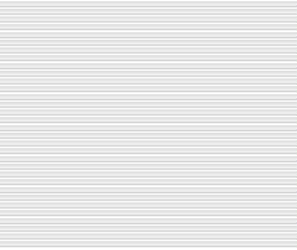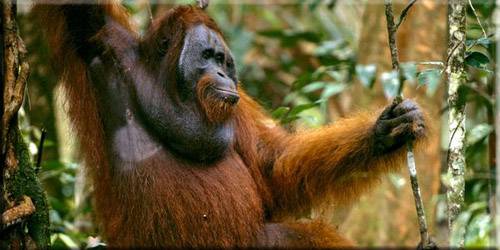










TOUR
AMAZING DESTINATION

INFORMATION

SUPPORT ONLINE

UTAKA Building 3rd Floor # 303 Jl. Utan Kayu Raya 87 Jakarta Timur , INDONESIA
Tel : +62-21-85904991
Fax :+ 62-21- 85904990
E-mail : info@fokusindonesiatours.com


BORNEO the land of the Dayak Tribes and Rainforest with it's richest wildlife of the world. Kalimantan, Indonesian part of Borneo, is two third of this Island, with a total of 540.000 sq kilometers. The northern part of Borneo is formed by Malaysian Sabah & Sarawak, and the tiny oil rich Sultanate Brunei. The heart of Borneo is made up by mountain ranges up to 2000 meters above sea level. Great Rivers cascade down from the highlands, and are crucial infrastructure channels between the coast and the deep interior. The river highways attract tourists who wants to travel into the jungle regions, and visit the traditional living Dayak tribes, once headhunters, who still live in communal hard wooden houses called "Longhouses". The more then 200 Dayak Tribes in the Hinterland of Kalimantan have still kept their original culture, influenced by the kaharingan supernatural of spirits religion, while they already left their headhunting activities at the Dutch colonial period at the beginning of the 20th century. Longhouses and jungle life are not history yet, it can be found all over Borneo, also hunting with the blowpipe in the forest can still be spot or done, local medicine men can learn you how to live in harmony and healthy with the nature. Borneo is the world where original culture and nature collide. The Dayak arts are extra ordinary and vibrant designs, the characteristic flowing geometrical used in portraying scenes of jungle life comes from Chinese and Vietnamese Dong Son influences. Flora and Fauna at Borneo is amazing, while of course the "green gold" exploitation since late sixties has destroyed more then half of it, but a turning point is seen, now the Indonesian government and also the people understand the beauty and wealth of Borneo's Tropical Forest. Kalimantans coast featured mangroves swamps, and low-land rain forest, an inland belt of gentle hills and alluvial plains marks the start to the deep jungle. Towering dipterocarpus trees, valuable ebony and iron wood trees are scattered throughout. The wild life is exotic, orangutan, only found at Sumatra and Borneo, along with the endemic proboscis monkeys, and other forest denizens including clouded leopard, leaf monkey, macaque, pangolin anteater, tiny tarsier, lizards, crocodiles, pythons and more then 600 bird spieces as the most famous Sun Birds, pheasants, Kakatua, and Hornbills. Also the last Fresh Water Dolphins on earth can be spot at East Kalimantans Mahakam River. Wildlife spotting opportunities are the best in the heart of Borneo or in the National Parks, while it's never a guarantee to see wildlife, visitors at least can get a glimpse of their habitat and sounds, before a spot of a rare animal will be seen.
WEST KALIMANTAN
Lying directly on the equator and serving as the main gateway into the Provincial capital of Pontianak. Founded in 1771 by Syarif Abdul Rahman Al-Kadri of Saudi Arabia, the city is now a bustling economic hub as well as home to a sizeable university and a giant indoor sports stadium. Canals crisscross the city and one of Indonesia's longest rivers, the Kapuas (1143 km long), divides the town in two, providing an essential and historical communications link. Like Java and Sumatra, West Kalimantan was once an important cultural crossroads Hinduism reached West Kalimantan by about the year 400 and evidence of both early Hindu and Buddhist civilizations in the region have been discovered. Stone carvings and ceramics can be traced as far back as the 5th century, but it is the influence of Islam that has had the most impact on this region. The advent of Islam in West Kalimantan occurred at about the same time as the rise of the first Islamic Kingdom in Aceh in the 15th century. Islam was rapidly embraced and various kingdoms grew in strength and power, particularly because of Kalimantan's strategic importance along trade routes to China and Philippines. The advent of Islam in West Kalimantan occurred at about the same time as the rise of the first Islamic Kingdom in Aceh in the 15th century. Islam was rapidly embraced and various kingdoms grew in strength and power, particularly because of Kalimantan's strategic importance along trade routes to China and Philippines. West Kalimantan covers an area of over 146.807 sq km, rich in a variety of minerals and precious stones, and remains largely unexplored. Coastal areas are mainly swamp lands with more than 100 rivers sculpting the flat plains. In the mountainous eastern parts of the province, away from the city and plains, there are many Dayak villages.The Dayaks have ancient traditions and beliefs which are expressed in various forms ; earlobes elongated by heavy earrings, tattoos, intricate paintings, designs and carvings and wonderful dances of respect, heroism, welcome and cure. A large Chinese population, Malays and other Indonesian ethnic groups account for the rest of the inhabitants of the province.
CENTRAL KALIMANTAN
Central Kalimantan is the biggest province on the island, covering 153,800 square kilometers, most of which is jungle. The northern area is mountainous and difficult to reach. The central area is dense tropical forest. The southern area is swampy and has many rivers. The climate is hot and humid. The three dayak sub-tribes who inhabit this province area the Ngaju, Ot Danum, and Ma'anyan Ot Siang. The Ngaju are nomadic, adhering to the old Kaharingan religion, which is a form of ancestor worship mixed with elements of animism . With approximately 6,000 people, the Ot Danum is the largest among the three sub-tribes. The Ot Danum live in long houses which sometimes have as many as 50 rooms. The women are know for their skill in plaiting rattan, palm leaves, and bamboo. Like other Dayak, the men are good hunters, using simple tools. The art Central Kalimantan clearly bears the marks of the Kaharingan religion, which is the traditional belief of the Dayaks in the hinterland of Central Kalimantan. Building styles, statues and carvings have been influenced by the Hindus, Chinese, and Hindu - Javanese. Aside from their aesthetic properties, many objects are appreciated for their magic value.
SOUTH KALIMANTAN
The Meratus mountains divide South Kalimantan into two distinct regions. The eastern part of the province is filled with mountains covered with dense tropical rain forests, home to the "Orang Gunung" or Mountain Peoples. Collectively called the Dayak, they form the minority of the region's population. The southern section of the province is much flatter with large rivers meandering through lowlands to vast mangrove swamps along the coast, helping to make South Kalimantan an exceptionally fertile land. Many villages and settlements have been built along these rivers, by the indigenous majority, the Banjar. South Kalimantan is full of colorful and distinctive traditional arts and cultures which can be seen in its people's way of life, art, dance, music, ancestral dress, games and ceremonies. Exquisite traditional and commercial handicrafts are all made from local raw materials which include a variety of precious and semi precious stones, gold, silver, brass, iron and a wide variety of woods including bamboo and rattan. South Kalimantan, is one of the largest wood producers in Indonesia. Extensive forests with a wide variety of trees such as ironwood, meranti, pinus and rubber have helped to make the province a unique and rich natural resource. The provincial capital, Banjarmasin, lies a short distance from the mouth of the Barito River at its confluence with the Martapura River. The rivers are literally the life blood of the city everything revolves around them. They are lined with tightly packed stilt houses. A lot of business is done on the waterways : floating markets flourish selling an enormous variety of goods including a tropical selection of fresh fruit such as Kesturi, a rare aromatic species of mango, durian, rambutan, butter fruit, pineapple, watermelon and banana. South Kalimantan is well connected with cities all over the Indonesian Archipelago through Syamsuddin Noor airport, which is about 25 km from Banjarmasin. This busy airport handles DC-9's, allowing Merpati Nusantara, Bouraq and Sempati dan Dirgantara Air to service the province. South Kalimantan can also be reached by sea at Trisakti and Banjarmasin. For interior travel there are roads, but the waterways are the preferred form of travel.
EAST KALIMANTAN
As a major producer of oil and timber, East Kalimantan is at present the most industrially advanced province of the island and the second largest province in Indonesia. It is also the home of the original inhabitants of Kalimantan, the Orang Gunung or Mountain People. The tribes are collectively called Dayak, although this name is not embraced by many tribes-people themselves, who prefer to be known by separate tribal names such as Iban, Punan and Banuaq. Local tribes traditionally live in communal long houses called Lamin or Umaq Daru. They are built on wooden piles, sometimes 3 meters high as protection against wild animals and flooding. The Punan people are nomadic hunter-gatherers, and only use the long house at the height of the rainy season.Steeped in tradition, the interior of the long house is typically divided into separate family quarters with a communal areas connecting each of the families. It is in these communal areas that village meetings are held and ceremonies performed, thereby reinforcing the strong tribal bonds in the face of rapidly advancing 20th century technology. Guardian statues are normally placed in front of long house to protect them against evil's spirits who bring disease and bad fortune. The more remote and traditional tribes-people have pierced earlobes, which over the years have become stretched by the weight of heavy gold or brass rings, and beautifully elaborate tattoos. Local jewelry and designs are intricate and powerful, often giving messages to be passed down from generation to generation. The most common starting points for many journeys and adventures on the island are Balikpapan and Samarinda, the provincial capital. Traveling along the extensive Mahakam river system is a fascinating adventure. River boats slide unobtrusively through heavily silt - laden waters, wild orchids drip off trees, Proboscis monkeys signal your arrival to the crocodiles and legendary hornbills. A 5,000acre Orchid Reservation close to the village of Kersil I cultivates 27 different species of orchid including the very rare Cologenia Pandurata or black orchid.
SAMARINDA is the provincial capital of East Kalimantan. Located on the Mahakam river, the town occupies a space of about 167 square kilometres and has a population of approximately half a million people. On January 21, 1668, they founded the settlement which is now the city of Samarinda. For inland tourism Samarinda is the starting point for exciting Mahakam River, Jungle and Cultural Dayak adventure. Sarongs from Samarinda are very well known throughout Indonesia. Samarinda sarongs are woven in cottage industries, and usually use high-quality silks. Balikpapan The name Balikpapan is presumably derived from an overloaded ship, which capsized near Tukung Island. A Dutch geological map in 1870 contained a small village of that name on Balikpapan bay. Now East Kalimantan's leading oil town, and one of the most important in Indonesia, Balikpapan was during World War II the target of assaults by both the Javanese and the Allies. Balikpapan is the main gateway to East Kalimantan province. It has grown in importance since the opening of the International flight routes. This town of about 500.000 is also visited by Pelni passenger ships on the route Surabaya - Ujungpandang - Balikpapan. Mahakam River The Mahakam river is 920 kilometers long, running over the Muller Mountain , which forms the boundary between East and West Kalimantan, between Indonesia Kalimantan and the Malaysian state of Sarawak. The river as many tributaries, and in a number of places is 400 to 500 meters wide. With it's length of 920km the River is the second largest river of Indonesia, starting at the Muller Mountians and ending in the Sulawesi Sea.The muddy river at some places will be up to 2 Km wide and is the high way in to the interior of East Kalimantan. The lower half of The Mahakam River is populated by Malay and Kutai tribes, the upper half by the native Dayak tribes. Your journey will take you through impenetrable tropical forest and dense undergrowth draped in giant orchids , mangrove flowers and lianes. Instead that much of the jungle is secondairy growth or has been clearcut. The wildlife is unusually diverse, monkeys, gibbons, wild ox, wild cats, flying lemur, martins , weasels, fresh water dolphins, orang utans, sun bear, leopard, snakes, hornbill birds, parrots, parakeets, and crested fireback pheasants. Also many kinds of beautiful butterflies and metallic beetles, poisonous polypods, brightly colored millipedes & giant walking sticks can been seen. To get an impression of the different Dayak cultures & lifestyles, head up to the rivers tributairies. Long Apari Long Afari is a village far into the Mahakam river's upstream reaches. It can be reached in two hours from a point on the Peangei river. The people of Long Apari belong to the Aoheng sub-tribe. Unlike those of other Dayak settlements, houses in long Apari are not built in neat rows, but are scattered across the hillside.The village is inhabited by about 800 people, who live from farming, fishing, hunting and working in gold mines during the dry season.Some of them make articles of rattan, Mandau machetes, and pandanus-leaf mats, which they sell in towns and villages downstream.
BARONG TONGKOK is a nice village and good for spending the night. Several small waterfalls are found in its surroundings. There are lodgings, shops, and motorcycles to take visitors to other Dayak villages. Linongangmapan is 300 meters aside from the village road between Barong Tongkok and Tering. An ancient megalith site is found here. To reach the location, one must walk for a distance of about 40 kilometers, starting from kersik Luway. Other tourist spots in this regions include Jentur Gemuruh waterfall and Pepas Eheng village belongs to the Barong Tongkok district, 209 kilometers from Samarinda . Plait work, rattan furniture and Tunjung Dayak statues are made here. Melak Melak is a rather busy little town and the capital of a district. It can be reached from Long Iram in about 30 hours or from Tenggarong by motorboat. The inhabitants of Melak are dayaks of the Tunjung sub-tribe. Lodgings and a modest restaurant are available in Melak and it has an old longhouse (betang). Local handicrafts can be bought here. Kersik Luway Nature Reserve Kersik Luway is nature reserve between Melak and Barong Tongkok, 18 kilometers to the south. The "Black Orchid" (Coelogyne pandurata) which blossoms between April and December, grow s on shrubs in this 5,000 hectare reserve. Many hundred of other orchid species also grow in this forest. The reserve is located 170 kilometers from Samarinda and can be reached in 32 hours by boat. Tanjung Isuy Tanjung Isuy is a settlement of the Benuaq dayak. There is an original traditional longhouse in the village which welcomes visitors. Woman can be seen weaving ulap doyo, the traditional free-fiber cloth typical of the area.Visitors can also see the guardian statues and the grave of a Benuaq king.In this area, 149 kilometers from Samarinda via Muara Muntai, we can see floating houses on Lake Jempang .There is a grand old longhouse in Mancong, 15 kilometers from Tanjung Isuy. Also visit the lamin ( Longhouses ) of Pentat and Lembunah, on the Ohong River. Various species of birds, iguanas, and bekantan (Proboces monkeys) live in the forest along the river . Muara Muntai Muara Muntai is not far from Lake Jempang. It is a convenient stop for visitors traveling into the hinterland. Tenggarong Tenggarong is 39 kilometers away from Samarinda. It is the capital of the Kutai regency, and is almost two centuries old. Up to 1960, the regency was know as the special District of Kutai. The remains of the Kutai Kertanegara Kingdom are found in this town. The old palace is now the State Museum of Mulawarman.The center of the Kutai Kingdom is presumed to have been in the vicinity of Muara Kaman. Due to fear of foreign incursions, it was moved upstream , to Jembayan village. The King acting on divine advice given to him in a dream, later again moved the Kingdom's seat of power, to what is now the town of Tenggarong. Pesut Mahakam ( Water dolphin ) If one is lucky, one might see a pesut Mahakam (orcela fluminalis), fresh water dolphin, during the trip. The species is also found in the Mekhong river in Cambodja and in the Amazon. In the Mahakam it usually surfaces towards sunset in the vicinity of Loangkang.The RASI Information and Rehabilitation Center at Muara Pahu can tell you more.. Derawan Island Derawan Island has to total land surface of 40,000 hectares and is nature reserve with beautiful scenery and beaches. Several species of rare flora and fauna are preserved here, such as scaled turtles, belimbing turtles and sea cows. The waters around Derawan are good for swimming, fishing, scuba diving, and other water sports. Maratua Island Maratua is beautiful Island with a small lake on it and a bay facing the Sulawesi sea. There are four village : Teluk Harapan, Teluk Alulu, Bohebelian, and Payung-payung. This area is very suitable for canoe races, speedboat racing, water skiing, and scuba diving. Samama Island belongs to the some group as that of Derawan Island. Samama means "mother". It is a nature reserve for turtles.

Transfer & Excursion | Hotels & Resort | Package Tour | Adventure | Promotion | Flights | Events | Related Links | Amazing Destination
Fokus Indonesia Tours
UTAKA Building 3rd Floor 303 Jl. Utan Kayu Raya 87 Jakarta Timur , INDONESIA
Tel : +62-21-85904991 | +62-21-85904991 Fax :+ 62-21- 85904990
E-mail : info@fokusindonesiatours.com
Copyrightę2011 FokusIndonesiaTours. All rights reserved
Development by Cianjur Webmaster


















